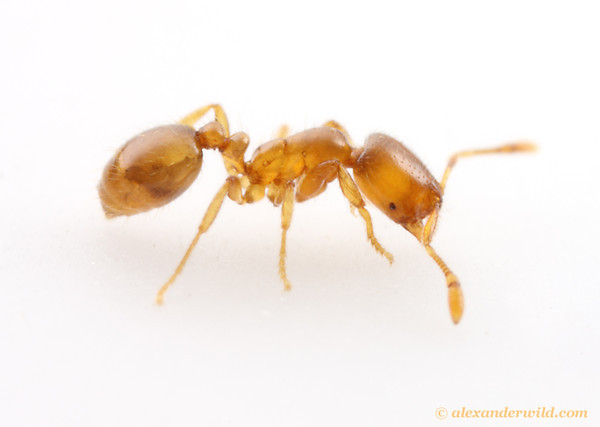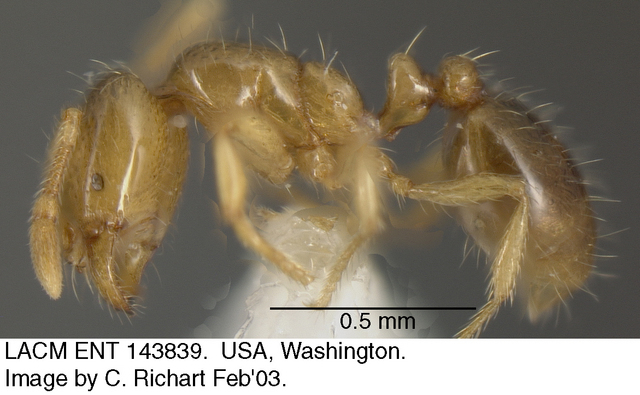Classification
Latin Name: Solenopsis molesta
Common name: Thief Ant
Solenopsis molesta ants are known as thief ants because of
their unique behavior of stealing food from other ants.
The actual name is derived from Greek roots. Solen means channel or
tube and opsis means of the face. That is referring to the channel
that is running down the Thief ants face. The molesta aspect of the
name refers to the interaction this ant has with others, it means
troublesome or annoying (Ellison, et al,
2012).
The following taxonomic information was obtained through the Encyclopedia of Life website (Encyclopedia
of Life, 2013).
Domain Eukarya
Kingdom Animalia
Phylum Arthropoda
Class Insecta
Order Hymenoptera
Family Formicidae
Genus
Solenopsis
Species
Solenopsis molesta
Domain Eukarya: In the domain
eukarya, eukaryotic organisms contain cells with a nucleus in a
membrane (Hickman et. al., 2012). The
domain eukarya includes organisms like plants, animals, fungi,
diplomonads, slime molds (Hickman et. al.,
2012).
Kingdom Animalia: Organisms in the
kingdom animalia are multicellular and unlike plants, they are
heterotrophic and rely on others for their sources of food (Encyclopedia
of Life, 2013). The cells or organisms in this kingdom do
not contain a cell wall (Encyclopedia of
Life, 2013).
Phylum Arthropoda: Phylum arthropoda
contain a very diverse number of species that have bilateral
symmetry(Encyclopedia of Life, 2013).
Arthropods are characterized by their tagmata, which are body
segments (Hickman et. al., 2012).
Another defining characteristic of arthropods is that they possess a
exoskeleton which is made out of chitin, which they later shed by
the process of exdysis (Hickman et. al.,
2012).
Class Insecta: Organisms in the class
insecta have very distinctive features. Insects have bodies that
include a head, an abdomen, and a thorax (Encyclopedia
of Life, 2013). All insects have 6 legs (3 pairs) and two
antennae (Encyclopedia of Life, 2013).
This class includes many species mainly because they have adapted to
many different environments (Encyclopedia
of Life, 2013).
Order Hymenoptera: The organisms in the order hymenoptera are
divided into many different suborders due to their diversity (Encyclopedia
of Life, 2013). All of the organisms in this order possess two
pairs of wings (Encyclopedia of Life, 2013).
Some well known insects that are in the order hymenoptera are bees,
ants, and wasps, and these insects are very important to the
ecosystem(Encyclopedia of Life, 2013).
Family Formicidae: This family contains all ants (Encyclopedia
of Life, 2013). Ants are unique in the way that they live in
colonies and how they classify the members of the colonies (Encyclopedia
of Life, 2013). Each type of ant has a different job or "class"
within the colony (Encyclopedia of Life,
2013). Ants have many ecological functions (Encyclopedia
of Life, 2013).
Genus
Solenopsis: The ants within the genus Solenopsis
are commonly called fire ants (Encyclopedia
of Life, 2013). Some species within the genus Solenopsis
are known for stinging (Encyclopedia of
Life, 2013). Fire ants are commonly very small (Encyclopedia
of Life, 2013).
Species Solenopsis molesta:
The species Solenopsis molesta are comprised of the thief
ants. These ants get their name because of the way that they acquire
their food from stealing it (Texas A&M
University, 2010). Find more about this interesting way of
feeding in our nutrition and
interaction sections!
